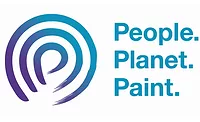AkzoNobel and Philips Welcome Damen Shipyards to Pioneering Antifouling Partnership

Image courtesy of AkzoNobel.
Damen Shipyards has joined AkzoNobel and Philips to help further develop a pioneering fouling control solution which uses UV-C light technology to keep ships’ underwater hulls clean.
The technology being used integrates UV-C light-emitting diodes (LEDs) in a coating scheme which emits just enough light to provide total prevention of bio-fouling accumulation on the protected area. Although successful small-scale trials have already taken place, bringing Damen Shipyards on board will add vital expertise in areas such as vessel integration.
“We’re both delighted and excited to welcome Damen Shipyards to the consortium,” says Ralph Slikkerveer, Research and Development Director for Marine, Protective and Yacht Coatings at AkzoNobel. “As a leading international shipbuilder, they’ll bring essential knowledge and experience and significantly increase our chances of success.”
All three parties will now work together to build on the progress that AkzoNobel and Philips have made since first setting up the RunWell consortium in 2017. The goal is to create a fully biocide-free fouling control solution which will provide groundbreaking performance, leading to substantial economic and environmental benefits.
"As a leading global innovator, Philips is continuously developing and expanding its extensive catalog of technologies that bring opportunities for growth and innovation in many business areas,” explains Jako Eleveld, Head of IP Licensing at Philips. “By offering access to our technologies through our technology licensing programs, we drive cooperation with partners that share our commitment to delivering impactful innovations. It’s great to see that Philips' UV-C technology has found its way to this innovative antifouling solution, which will benefit the shipping industry while at the same time enabling a positive environmental impact.”
Jasper Schuringa, Head of Corporate Venturing at Damen Shipyards, adds: “This is a very exciting project and an excellent fit with our own strategy to become the world’s most sustainable shipbuilder. There’s still some way to go, but the solution being developed clearly has the potential to reshape how the industry has traditionally thought about anti-fouling systems.”
“It’s a challenging project, but it’s also a fantastic example of the benefits of collaborative innovation,” continues Slikkerveer. “By working together as a strong partnership of three complementary Dutch companies, we’re confident we can combine our capabilities to deliver a sustainable solution that could completely revolutionize the fouling control industry.”
Looking for a reprint of this article?
From high-res PDFs to custom plaques, order your copy today!




